#post apocalytic books
Text
Primordial World: Book 5 by Baileigh Higgins
Higgins combines the natural dangers of the prehistoric world with the selfishness and cruelty that can taint human interaction, creating a book that blends fast-paced action with depth of character.
Note: while the author is blessed with a spiffing surname we are unrelated.
This novel is the fifth in Higgins’ Primordial World series. Possible spoilers for the previous volumes ahead.
Continue…

View On WordPress
0 notes
Text
Release Blitz: The Light After the Orange
Release Blitz: The Light After the Orange
The Tundra Stone Series, Book 1
Fantasy, Contemporary Fantasy, Post-Apocalytic Fantasy, Dystopian
Date Published: July 19, 2022
Publisher: Leirsinn Publishing
Eighteen-year-old Alex Chegasa, one of the first generation to be raised on
post-apocalyptic Earth, was taught to embrace her magical gifts.
After the Orange, as the planet burned, magic trickled in. The bombs that
had wiped out…
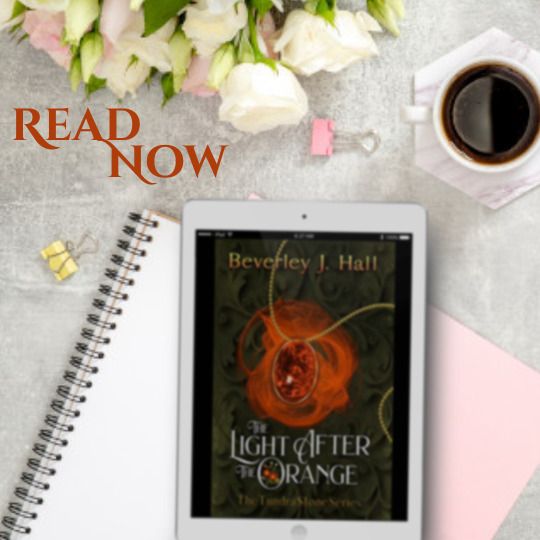
View On WordPress
0 notes
Text
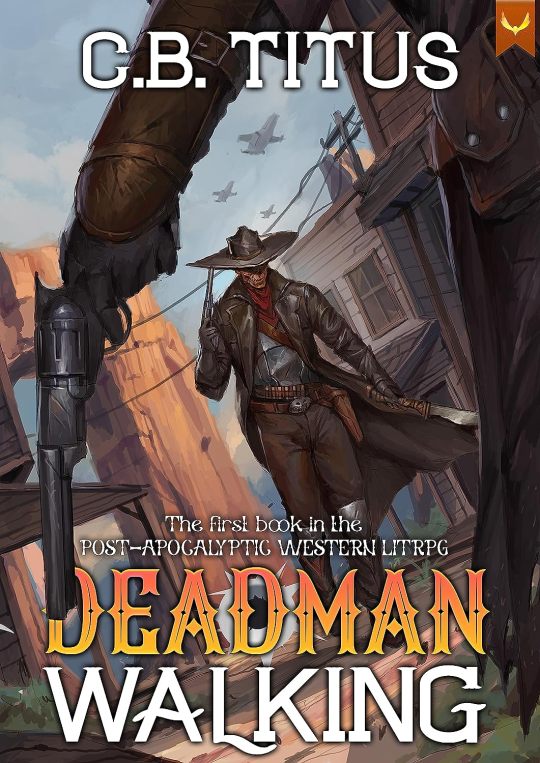
Yo! I wrote another book.
I've always been upset that I couldn't play as a ghoul in the Fallout games, so I basically wrote a trilogy about a mutant delivering mail and justice in a post-apocalyptic wasteland because this is what Bethesda has driven me to. This is you fault Todd, you should be ashamed.
Anyway, here's the blurb:
Even after the bombs fell, even after countries unleashed weapons beyond imagination on one another, even after lawlessness became the norm, people still expect their mail.
As a deadman, I'm uniquely suited to deliver it.
Rads don't bother me, and people who try to hurt me typically wind up dead. Sure, humans may not like dealing with a face like mine, but hey, it's not like you’ve got many options here in the wastes.
If you enjoy cannibalism, weird post-apocalytic societies, and fucked up creatures, give it a shot.
And here's the link:
119 notes
·
View notes
Note
Top 5 plot lines from a previous work you've written that you think it'd be neat to return to or rewrite? Or just top 5 plotlines from your work in general?
Oh this is a really big question. Plot lines is kind of broad, so forgive me if I miss the mark here:
So like six years ago I tried my hand at a self-publishing career, and put out my first book, The Secrets of the Kraken. I worked forever on it, and I think it's pretty good, if not an inexperienced first novel. (If you like the way I write characters, you'll like it). But I have a sequel for it. Like, an entire draft. It needs a lot of work, and I wrote it while my long term relationship at the time was falling apart, and there's a lot of emotions wrapped up in it. As a draft, it's a mess. There's things I really like about it, but there's things I don't too. One character has almost no agency and spends the book pining over a boy. It's so out of character for her. On the other hand, there's a conflict in it that I'm really pleased with: both sides are right and that makes them incompatible with each other. I do want to get back to those characters again, they're all lovely people.
I keep trying to figure out Elliot's story. She went from being an establishment witch, to a secret underground witch, to learning about magic in Seattle. I think there's a lot of potential there. I really want to get into the magical gig economy. Been thinking a lot about that one lately.
Now that Ultimate League is done, I've been thinking about the events that lead up to Ultimate League, mostly focused on Rammy, Heater Pants, and Halycon Hill. I think there's a lot of potential there. (Working title, "Kosmo obliterates a perfectly good player").
Serotiny! My post-post-apocalytic story about a group of Civil Servants trying to help make their society a better place. Very solar punk, very cassette futurism. I haven't quite cracked that story yet, but I love the characters (if you read Ultimate League, I borrow Spencer Agami from Serotiny).
Oh hey, remember The Salt?? I keep meaning to get back to that, and start telling that story again. Now that the ILB has arrived on The Salt, what will happen to the coven?
Okay, I think this answers your question!
4 notes
·
View notes
Text
The Light After the Orange by Beverley J. Hall
The Light After the Orange by Beverley J. Hall
The Tundra Stone Series, Book 1
Fantasy, Contemporary Fantasy, Post-Apocalytic Fantasy, Dystopian
Date Published: July 19, 2022
Publisher: Leirsinn Publishing
…
…
Eighteen-year-old Alex Chegasa, one of the first generation to be raised on
post-apocalyptic Earth, was taught to embrace her magical gifts.
After the Orange, as the planet burned, magic trickled in. The bombs that
had wiped out most…
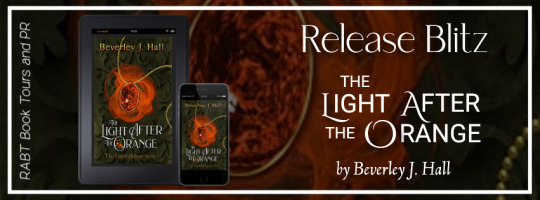
View On WordPress
0 notes
Text
The Light After the Orange Blitz
The Light After the Orange Blitz
The Tundra Stone Series, Book 1
Fantasy, Contemporary Fantasy, Post-Apocalytic Fantasy, Dystopian
Date Published: July 19, 2022
Publisher: Leirsinn Publishing
Eighteen-year-old Alex Chegasa, one of the first generation to be raised on
post-apocalyptic Earth, was taught to embrace her magical gifts.
After the Orange, as the planet burned, magic trickled in. The bombs that
had wiped out…
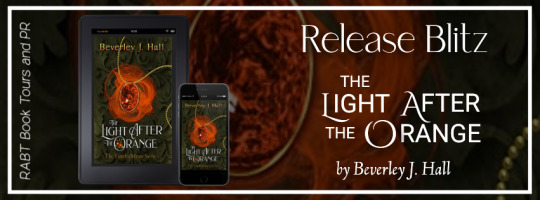
View On WordPress
0 notes
Text
Omegaling’s Halloween Reading List
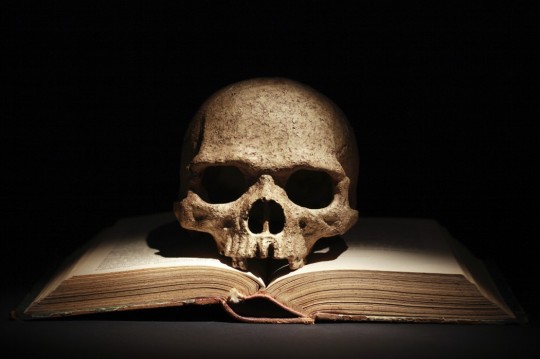
Autumn is, without question, my favorite time of year. The weather finally begins to cool, the air is perfumed by the scent of crisping leaves and wood smoke, stick-to-your-ribs dinners simmer on stove tops, the spicy-sweet taste of pumpkin tickles our palates, and, of course, it marks the coming of Halloween. And what better way than to spend those darkening nights, where the shadows begin to move as though they’ve taken on a life of their own and leaves scatter in the wind as though fleeing some unseen threat, than curled up under a warm blanket with a hot drink, reading a good horror story?
Here is a list of my favorite Halloween reads compiled from over a number of years. Hopefully you’ll be able to find some favorites among them as well.
Books of Halloweens Past
Midnight in the Garden of Good and Evil by John Berendt
Anna Dressed in Blood by Kendare Blake
The Halloween Tree by Ray Bradbury
The Nevermore Trilogy by Kelly Creagh
Welcome to Night Vale by Joseph Fink and Jeffrey Cranor
Coraline by Neil Gaiman
The Graveyard Book by Neil Gaiman
Horns by Joe Hill
The Devouring by Simon Holt
Johannes Cabal the Necromancer by Jonathan Howard
Pride and Prejudice and Zombies by Seth Grahame-Smith
Silence of the Lambs by Thomas Harris
Fang Girl by Helen Keeble
The Great Mortality: An Intimate History of the Black Death, by John Kelly
Twelve by Jasper Kent
The Shining by Stephen King
The Stand by Stephen King
The Historian by Elizabeth Kostova
The Pine Deep Trilogy by Jonathan Maberry
Warm Bodies by Isaac Marion
Swan Song by Robert McCammon
Sunshine by Robin McKinley
The Dante Club by Matthew Pearl
The Complete Works of Edgar Allen Poe
Four and Twenty Blackbirds by Cherie Priest
Maplecroft by Cherie Priest
Interview with the Vampire by Anne Rice
Stiff: The Curious Life of Human Cadavers by Mary Roach
Frankenstein by Mary Shelley
The Strange Case of Dr. Jekyll & Mr. Hyde by Robert Louis Stevenson
Dracula by Bram Stoker
The Screaming Staircase (Lockwood and Co.) by Jonathan Stroud
This is Not a Test by Courtney Summers
Affinity by Sarah Waters
My 2017 Reading List
The Deep by Nick Cutter
The Devil in the White City by Tony Goldwyn
Abraham Lincoln: Vampire Hunter by Seth Grahame-Smith
House of Leaves by Mark Z. Danielewski
For Halloweens to Come
Shutter by Courtney Alameda
The Exorcist by William Peter Blatty
Helter Skelter: The True Story of the Manson Murders by Vincent Bugliosi and Curt Gentry
Rebecca by Daphne de Maurier
The Strain by Guillermo del Toro and Chuck Hogan
The Invention of Murder by Judith Flanders
Darkhouse by Karina Halle
The Turn of the Screw by Henry James
The Mothman Prophecies by John A. Keel
Odd Thomas by Dean Koontz
Let the Right One In by John Ajvide Lindqvist
The Call of Cthulhu by H.P. Lovecraft
The Necronomicon by H.P. Lovecraft
The Women in the Walls by Amy Lukavics
Bird Box by Josh Malerman
Mary: The Summoning by Hillary Monahan
A Monster Calls by Patrick Ness
The Family Plot by Cherie Priest
Unspoken by Sarah Lees Brennan
Help for the Haunted by John Searles
Rawblood by Catriona Ward
A Taste of Blood Wine by Freda Warrington
Abomination by Gary Whitta
The Tale of Raw Head and Bloody Bones by Jack Wolf
John Dies at the End by John Wong
The Monstrumologist by Rick Yancey
Blood Red Road by Moira Young
The Replacement by Brenna Yovanoff
#Halloween#Halloween reads#Halloween books#horror books#horror genre#ghost stories#zombie books#vampire books#post apocalytic books#haunted houses#true crime#nonfiction horror#Classic Horror#dark history#cryptozoology
1K notes
·
View notes
Text
Hey guys right now transgender author Gretchen Felker-Martin is under attack by t**fs and the jkr brigade because of a part in her book. A british author is killed by a cis woman, and everyone is jumping on it because outlets are claiming it is “jkr being burned alive by transgender women” when that is NOT the case.
You can read the article right here
You can read her book, a horror novel featuring two transgender women fighting for their survival in a post-apocalytic world where all men have turned to zombies, right now on ebook and any retail bookseller

#not to be hashtag i work in a bookstore but :)#i usually dont make like. posts like this just bc im an idiot but i havent seen anyone talk about it#so i wanted to raise awareness and also introduce someone to a trans horror author :) !#izt
37 notes
·
View notes
Text
Post-Apocalypse Maps
The following are what I consider the best of the post-apocalytic maps I’ve accumulated over the years, in no particular order.
These are from Palladium Games’ “After the Bomb”, which I posted somewhat recently:

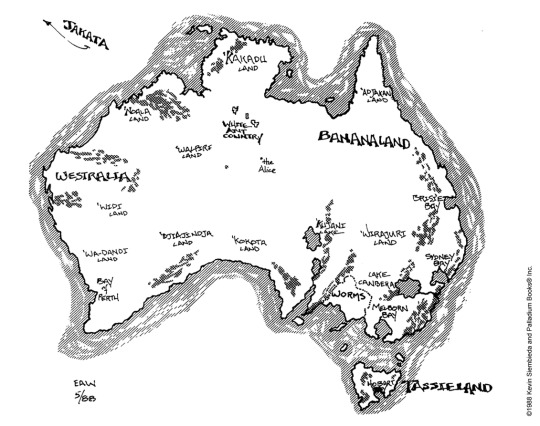
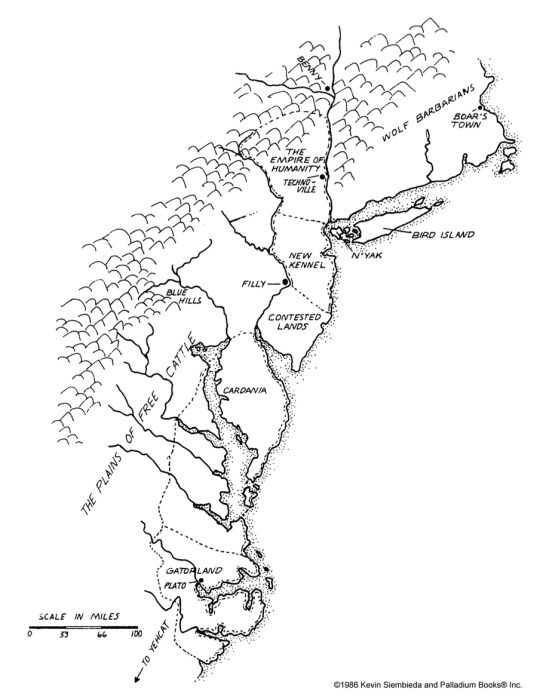
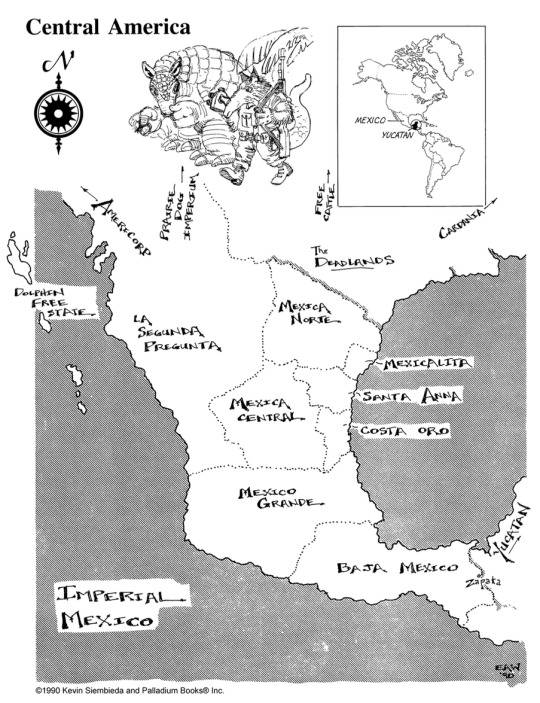
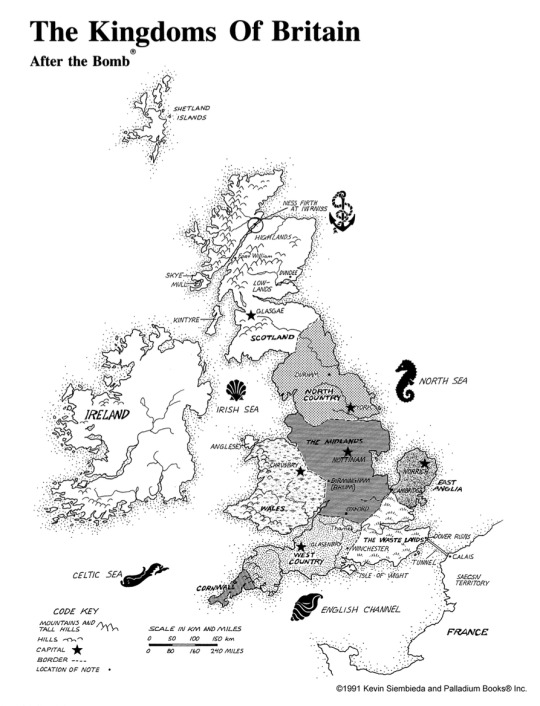
These are from several editions of Gamma World. Much-higher resolution versions are available if you download the books from DriveThruRPG:
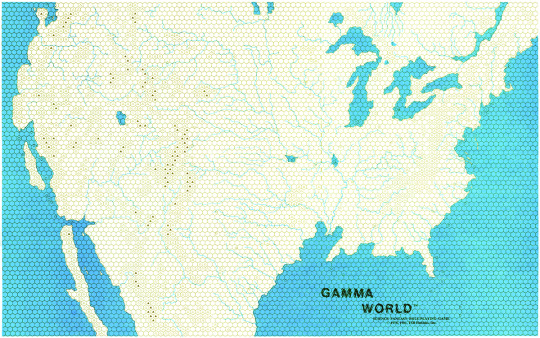
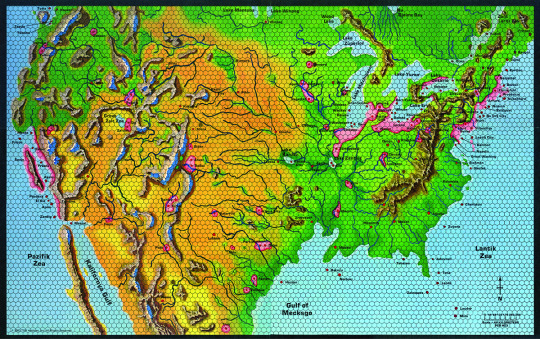

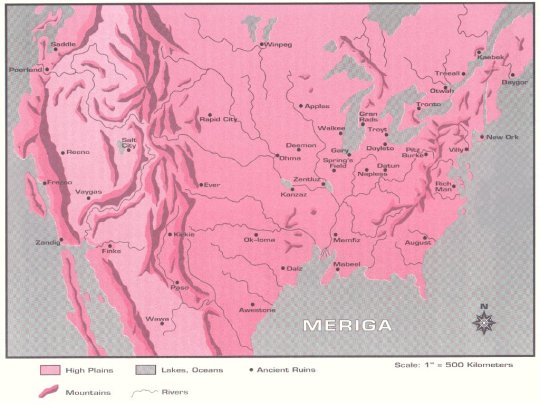
Here are two Gamma World 1st edition maps with cities and Cryptic Alliance territories:
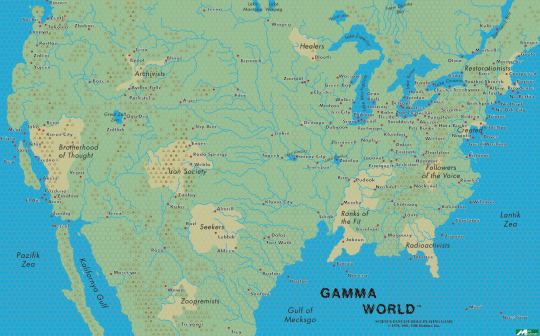
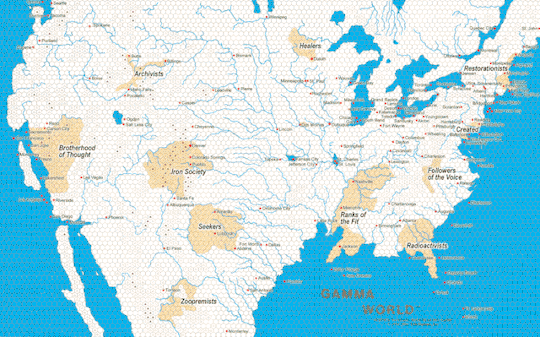
The following batch are from Darwin’s World, Wreck Age and Mutant Epoch:
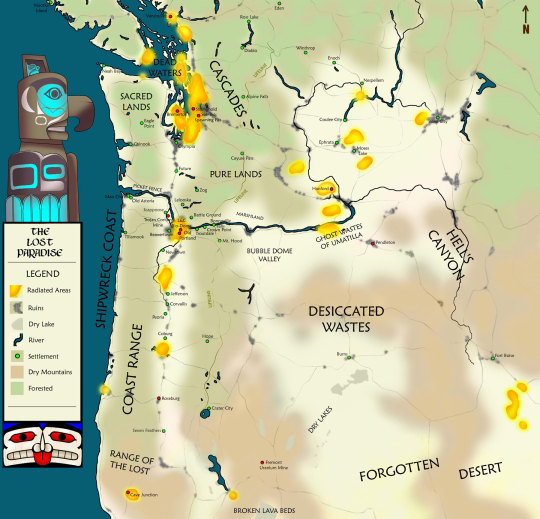
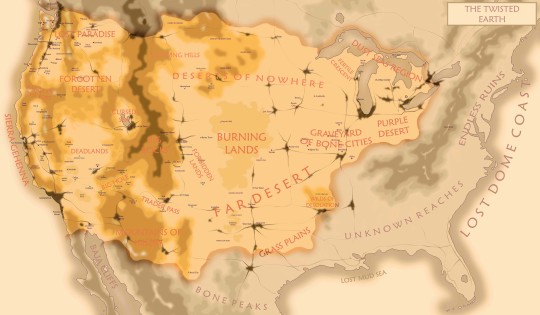
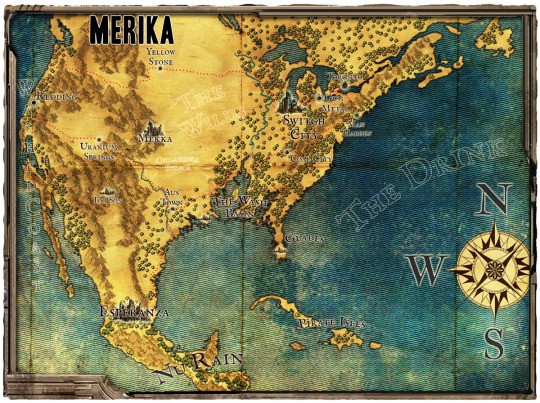

I’m not sure where I got these two. The first one, based on the file name I gave it, may be some kind of Gamma World/Horseclans mash-up:
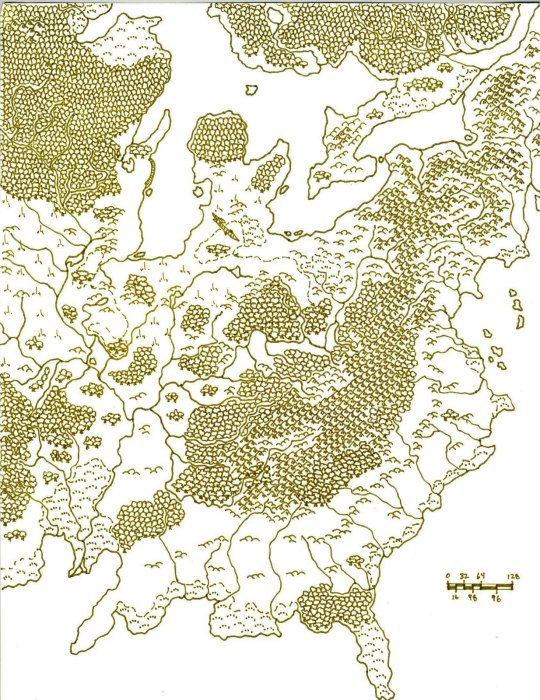

This is the Commonwealth from Fallout 4:
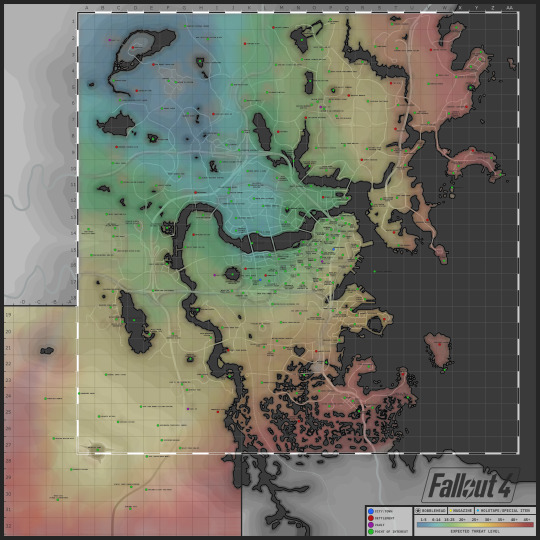
From Jack Kirby’s classic Kamandi comic book series:
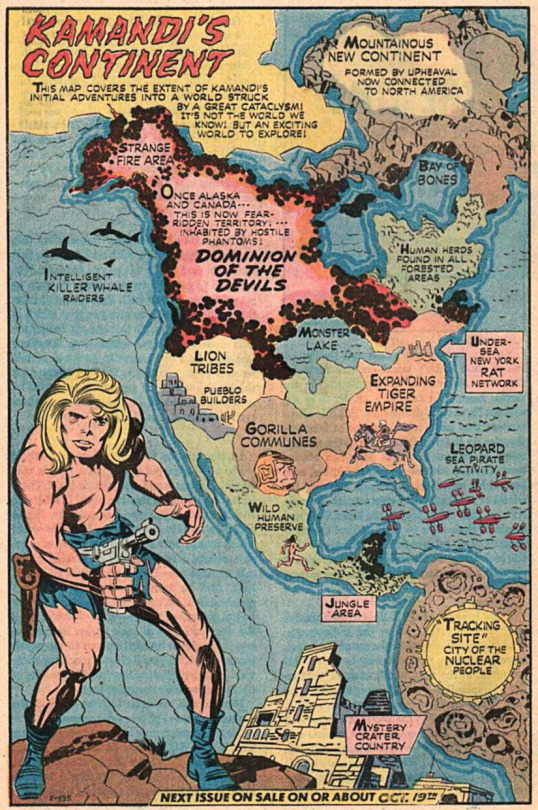

This is the map I made for my Tomorrow Men game, including the basic setting, the current PC map and a topographical version:
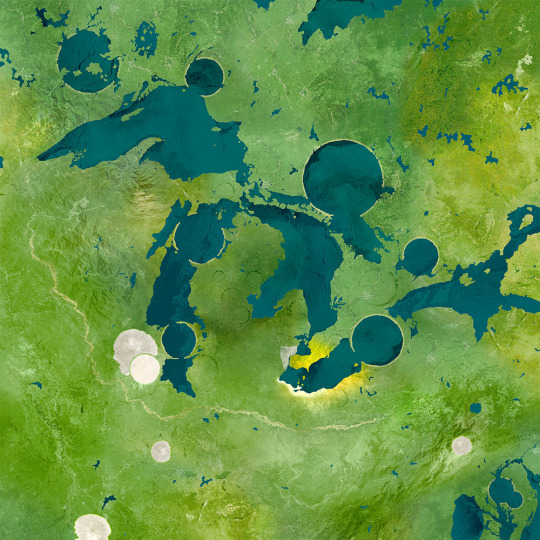
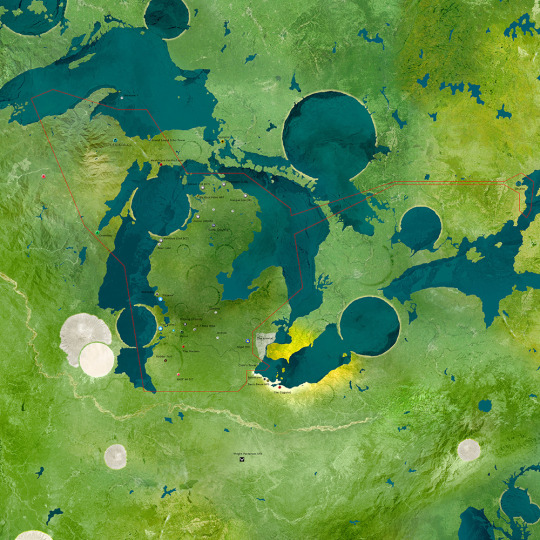

Finally, years ago, I made a website that combined Fallout 1 and the WWII first-person shooter Medal of Honor: Allied Assault. Visit the site here.
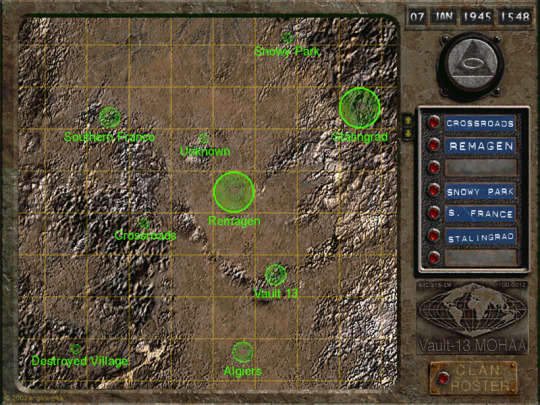
#post apocalypse#gamma world#map#fallout#after the bomb#mutant epoch#wreck age#darwin's world#tomorrow men#kamandi#brg
98 notes
·
View notes
Text
On the world of Mortal Engines, class, and the metaphors of consumption
This is less an essay and more a collection of thoughts. Basically I just saw a video on the Mortal Engines film and its being a civilisation too stupid to exist. I got fed up, mainly because so many of the criticisms amounted to ‘the book did it better’ with little elaboration but also the arrogantly grating voice of the presenter got on my nerves, but I cannot deny the points made and in fact wanted to elaborate further on the worldbuilding of this series and, while unrealistic, look at why the books were so engaging.
Some background to start off - Mortal Engines is a four-book series (and three-book prequel sub-series) written by English author Phillip Reeve, and depicts a bleak post-apocalyptic world. North America is uninhabitable and lost to the sands of time, irradiated, poisoned, and flattened by war. Eurasia is mostly barren plains. And, of course, the central premise - towns and cities have raised themselves onto mobile platforms and trundle about. Well, mostly. A major antagonist to this system is the Anti-Traction League, a collective of nations hiding out in old east China, the Indian subcontinent, southeast Asia and some of Africa. They are seen as barbarians and heathens by much of the world for refusing to mobilise, instead hiding in stationary citadels behind their mountains. The Traction Cities near-universally engage in a philosophy of Municipal Darwinism, a savage system of bastardised pseudo-biology where cities literally predate each other and ‘consume’ each other for resources. Cities eat towns, towns eat smaller towns. Some towns and cities deliberately adapt to cheat the system and make themselves a less appetising target, or for that matter a more aggressive and efficient hunter.
THE TRACTION CITIES
The first three books tend to focus their action on one or two cities, whereas the last is a bit more of a road trip. The other consistent thread is multiple characters’ stories running concurrently, usually reconnecting near the end. This allows the books maintain an open, almost global scale - you’ll nearly never not be moving, even sitting still on a city, which reinforces the theme of unnatural life. The first book focuses on London, which has been sulking in what was once Britain (by sheer happenstance on their part and pure irony on ours), and is suddenly running at full pelt back into Europe and eastward as fast as her engines can carry her. Why? London’s not the biggest city around, and the vast expanse of Eurasia is now the Great Hunting Ground - it’s where the big boys play, and by play I mean ‘savagely predate each other’. It’s dangerous territory for a little city. But over the first book, it becomes increasingly apparent that Traction Cities are increasingly non-viable option for existence. Fuel is scarce, prey moreso, and what morsels London can confidently snap up will not sustain it for long. There is an ecosystem at play here - static settlements can farm resources, but are universally seen as food, either by small bandit settlements to raid for supplies or for larger towns to just straight-up eat. Small towns too small to hunt tend to be miners or gatherers, either mining minerals to use or trade, or gathering resources like wood from natural deposits or sifting through the waste heaps left by bigger cities. Most cities bigger than that are ‘urbivores’, or hunter towns, that hunt and eat smaller prey or opportunistically scavenge the ‘carcasses’ of dead cities. I mentioned specialisation earlier, and like in nature, species and cities can occupy a niche that gives them an advantage and thus increased chance at survival. Airhaven, for example, is a politically-neutral city in the air that floats around Eurasia seasonally and serves as a rest stop, fuelling station and trading exchange for airship pilots the world over, Tractionist or no. Tunbridge Wheels is a pirate-run town that has a lightweight wooden chassis and flotation devices to hunt amphibiously in a world where many small towns escape threat by setting up on islands. Panzerstadt-Bayreuth is a conurbation of four massive cities, too big to survive long without prey, they banded together to take down the biggest of prey (it’s unclear whether they achieve this through sheer size or whether they decouple and become a pack hunter). Anchorage, the last American city, neutered its own jaws to increase mobility, skating around the frozen north too fast for threats to catch up with, and survives on trade. Brighton is a pleasure city that paddles around the warm Mediterranean, technically still a predator but with no real agenda and about the only city left that can be called a tourist city (it’s run on the back of brutal slave labour). And these are just the major ones. Throughout the books, cities are treated like living things ... like mortal engines.
And like living things, they need resources to survive.
A DYING WAY OF LIFE
The books are inconsistent on the origins of Traction Cities, as it turns out deliberately - history is written by the winners, after all. But it’s all closely tied to the ‘apocalypse’ part of the post-apocalytic I mentioned earlier. Long ago in-universe, long into our future, was a terrible event known as the Sixty Minute War. This war tore the world asunder with nuclear and quantum energy weaponry. America, the epicentre, is simply no more (it turns out there are some fertile areas in Nova Scotia, but for the most part America is dead). Entire new mountain ranges were born, notably the Tannhäusers in East Asia that shield the heartland of the Anti-Traction League. There was a long period of geological and tectonic instability. According to legend, Traction Cities arose to escape these instabilities. In other words, like animals will flee a volcanic eruption, cities first became mobile to escape and survive. Trade was likely facilitated by towns literally being able to park next to each other. Ironically, London was also where everything changed. After Nikola Quercus conquered (static) London with his mobile fortresses, he decided to upgrade and raise London onto wheels to become the first fully-mobile city. And he did it for war. After all, there’s no better comeback to ‘you and what army’ then literally rolling up with your entire city. By the series present, the idea had caught on and grown into the ideology described above. But herein lies the problem. Early Traction London was a tiny little thing. Now it’s not even the biggest fish in the pond, but it’s still HUGE. And, as we all know, big things need lots of energy to go. London is described as having a top speed of about sixty miles per hour at the height of a hunt. So, you need fuel. There is still oil in this world, mainly because they now have no qualms about mining Antarctica, but if you think there’s nearly enough crude oil to run a world full of cities like London you are sorely mistaken. Wood’s not much better off. And, of course, Traction Cities tend to run on some form of internal combustion engine - it’s only at the very end of the traction era that science has advanced enough for a town to experiment with magnetic levitation. So what do they burn? Well, bits of other prey towns. Do you see the problem? Use fuel to hunt towns, burn those towns for fuel. What next? And it’s not just fuel. London captures a little salt-mining town called Salthook at the beginning of the first book to introduce us to the concepts at play, and we see what goes on in the Dismantling Yards - part of a system literally called the Gut, in case the metaphor wasn’t clear yet. Everything is recycled. Bricks, mortar, steel, wood, everything. Because the state of technology is so weird in this world, Old-Tech (technology from before the SMW) can be incredibly valuable to history and/or science, and London is keen to snaffle that up too. The people are interred into refugee camps, though if you know anything about how real-life Britain treats refugees you can probably see where that is going. And it’s not enough. It’s never enough. Food is an even more pressing concern. Unless you’re very rich (more on that in a mo), food is mostly algae-based, then hardy vegetables that grow quickly like cabbage. And it’s running out fast. And London’s a big city with a lot of resources at its disposal. Most cities don’t even have that. A lot of cities are starving on the wheels, city and populace alike. A lot of cities run on slave labour, and feed those slaves as little as they can get away with. Shan Guo, home of the Anti-Traction League, is a green and vibrant land only because it doesn’t have cities running over or eating its farmlands every other day (and, again, city folk generally don’t know this - they’re given endless propaganda that Anti-Tractionists are barbarian warbands a la Mad Max). A lot of the A story is told from the point of view of Tom Natsworthy, who until the events of the book had never left London. He’s never seen bare earth or walked on mud before. He’s never seen a horse. The idea that you can survive, much less thrive, outside of a Traction City is alien to him. But on the city he came from, everything is rapidly running out, and some cities are turning to desperate measures to survive, including Arkangel openly bribing pilots to sell out the locations and courses of nearby cities. A chilling scene in the first book even has Tom see, from the safety of the air, the corpse of Motoropolis, a city not unlike London that literally just starved to death, running out of fuel and helpless as the scavengers closed in. It’s been weeks since the city stopped, and the narrative description evokes the grotesqueness and sadness of a whale carcass. Sheer Jingoism is about the only thing keeping Municipal Darwinism alive - Traction good, stationary bad.
CLASS, CLASSISM, AND OTHER SOCIAL OPPRESSIONS
In a world so starved as this, compassion is hard to come by. Cities still exist mainly by virtue of rigid social stratification, and often that stratification is literal - most medium-to-large cities have tiers, and will generally arrange those tiers based on social class. London, for example, has seven tiers. The bottom two tiers are dominated by the Gut, the engines, and homes and communities of the workers who keep them running. Tiers 4 and 3 are miscellaneous proles of increasing social standing. Tier 2 is mostly what I’d call ‘tourist London’ - lots of the nice bits and the establishments that London likes to be proud of. Because of his work at the London Museum, this is the quality of life Tom Natsworthy was most used to. Tier 1 is High London, where all the rich live and have their amenities and nice parks (and even that doesn’t last - London’s food shortage means even the High London parks are eventually, begrudgingly, turned over for food production). Katherine Valentine, the hero of the first book’s B plot, lives here. Finally there’s Top Tier, which is purely administrative. The only buildings are the Guildhall (the seat of government), St Paul’s Cathedral (which the Engineers’ Guild have secretly been installing a deadly superweapon in under the guise of ‘restoration’ work) and the headquarters of the Guild of Engineers, the most powerful of London’s Guilds. Social stratification is nearly non-existant, and people are shown to get very uncomfortable when out of ‘their space’. Tom is sent to work in the Gut during the capture of Salthook as a punishment before the plot ejects him from London, and he notes being actively intimidated by the claustrophobia, the dirt, the rough and burly labourers, and the noise. But despite Tom’s relatively privileged life - he lives near High London, above the heat and noise and smoke of the engines, in the care of one of the top four Guilds of London - he is of very low social status. Tom Natsworthy is an orphan; his parents were Historians, but were killed when an accident occurred and part of Tier 3 collapsed, crushing anything on Tier 4 beneath. Even before that, the Natsworthys were middle class at best, but being orphaned meant being left to the care of an orphanage run by the Guild of his parents, the Historians. The Historians were Tom’s only source of education, and eventually they would employ him, but with no parents or money, Tom can only afford a Third-Class apprenticeship. He has no upwards mobility within the Guild, and with no money he can’t leave and train with another. His dream of being a pilot trader, or better yet adventurer, will never come true under normal circumstances. The rich live in a completely different world yet. Katherine Valentine, daughter of the Head Historian and the Lord Mayor’s ‘right-hand man’ Thaddeus Valentine, has a positively bougie lifestyle with not a care in the world. Ironically, though, it is through Katherine’s eyes that the horrors of London’s class system are revealed. Trying to find information about her father’s would-be killer, Katherine finds herself regularly travelling to the Gut, eventually befriending an apprentice Engineer who witnessed the attack. But in the Gut, life is very different. It’s not just a life of hard labour and smoke - petty criminals and the aforementioned ‘refugees’ are tasked with working dangerous and sickening jobs like managing the city’s sewage. And by that, I mean ‘harvesting literal faeces to be converted into food and fuel’. The foreman overseeing their work admits they feed such criminals nothing else. And he has the gall to be annoyed that they keep dying of diseases like cholera and typhoid! These people are denied medical care, denied treatment, denied even basic food other than being told to literally eat sh*t. And when they inevitably die? They get sent to the Engineerium to be turned into robotic zombies that can never get sick, tired or unhappy. And, eventually, they’ll be put right back to work. The crimes these criminals did to deserve this, remember, include petty theft, criticising the Lord Mayor, and living aboard a town that got eaten. The foreman literally cannot fathom why Katherine would care about these people’s wellbeing - after all, they’re just criminals. The Engineerium’s end goal in all this is, again, to staff the entire lower tiers with robot zombie workers who will never grow tired, get sick, complain or protest their lot in life, and will never disobey orders, and just enough human overseers to keep things running smoothly ... because that’s what these people are worth to London, cheap, unending labour. Katherine can’t even bring herself to tell her high-class peers about what she learned down there, because it’s such a different world that they would never empathise, much less care. Again, slave labour is common in this world, especially child slavery - Brighton runs on it to maintain its image as a floating Caligula’s Palace, and in Arkangel slavery is so normal that we watch a rich man beat a slave nearly to death for the crime of bumping into him. In the second book, we see the logical end-point of this. Anchorage’s social structure has completely fallen apart due to a plague in recent years that turned to once-proud ice city into a ghost town manned only by a skeleton crew. The margravine, Freya, is only 14, but with her parents dead, she finds herself in charge of the whole city. She has no household staff, apart from Smew, who finds himself constantly juggling outfits to adopts the roles of steward, chamberlain and so on. His official role before the plague was ... erm ... the Dwarf. He was there in a manner similar to a court jester, for the amusement of the margrave due to being a little person. But the head navigator is just ... the woman who kept the maps. The head engineer is going half-mad, seeing his dead son staring at him from the shadows, and the only reason the town’s still going is because his systems are the best on the ice and can mostly run on automatic. They have no doctor. The only other people of consequence in Anchorage are the Aakiuqs, the Inuit couple who run the air-harbour. The common workers of Anchorage number in the mere dozens. And yet, because they’re so fixated on their traditions, nobody will drop the formalities and just admits that they’re trying to uphold a class system that doesn’t work anymore. No, that’s not quite right - everybody realises it’s pointless to maintain the artifice of Anchorage’s social heirarchy, but nobody wants to be the first one to say it out loud. Much like Municipal Darwinism, nobody want to address the elephant in the room, that the system is broken and that people hold onto it because it’s comfortable in the face of uncertainty. Only in Anchorage’s darkest hour, when everything has been turned upside down and the conquerors are on their doorsteps, do the agree to drop the formalities, drop the artifice of class, and address each other as people, say what they think, and work to save what they have left. And of course, there’s the racism in the world. Life on mobile cities has made cultures smaller and more insular, considering we mainly see this series from the point of view of culturally-English towns. Throughout the first book there is a clear west vs east divide - the Traction Cities are generally English-speaking or multicultural enough that English will get you by. The Anti-Tractionist League, meanwhile, are south or east Asian, or else African, and are commonly understood to be ‘those brown people’. The only ethnically white Anti-Tractionists are from ‘Spitzbergen’ (likely Scandinavia/Finland and northwest Russia) and Hester Shaw’s family, and the latter lived on a town that floated out to an island and gave up running from predators forever. The way Tom reacts to this attitude calls to mind the way racists might refer to ‘race traitors’. There’s even an in-universe slur for people who live in static settlements; ‘Mossies’, because ‘a rolling town gathers no moss’. However, when Tom is taken to Shan Guo itself, he realises that all the propaganda he’d been fed his whole like is exactly that - propaganda. Shan Guo is described as beautiful - an endless patchwork of rolling fields and farms, colourful, bright, vibrant, heaving with life and energy. The Anti-Tractionists aren’t vicious savages, they’re just ... people. Tom can’t understand it at first. He wonders how people can live without the hum of engines or the vibrations of deckplates - he subconsciously equates city life with, well, life, and the absence of that makes him uneasy. But he can also see this culture before him, thousands of years old, outlasting even the end of the world, and he realises there is another way. The next time he sees London, he sees it from outside, from the side of the hunted, and he realises it’s not beautiful or efficient, just dirty, and huge, wrapped in its own waste smoke and driven only by destruction. For the rest of the series, even with the rise of the radicalised Green Storm (Anti-Tractionists Lv2), large Traction Cities are consistently the enemy. Tractionism as a culture is understood to only represent imperialism, destruction, and consumption, literally and figuratively.
SCIENCES SANS FRONTIERES
It should be noted that science and technology are not universally reviled by the series. As a dieselpunk series, a certain degree of technology is fundamental to the series existence. But this is a very different world than the one we know. On the one hand, engines exist that can drive entire cities. On the other, computers basically do not exist. The rare few that still exist are not in working condition, and nobody knows how to restore them. Heavier-than-aircraft don’t really exist - the third book introduces some, but they’re small, experimental ... barely more than short-range toys designed for flashy air shows but not real travel. The main form of personal locomotion in this world is by airship, and this world’s airships are far beyond anything we’ve made in our time. But lost technologies are heavily associated with the hubris and destructiveness of the Ancients. Until now. Like I said, the most powerful Guild in London is the Engineers’ Guild. And they got that way under the leadership of now-Lord Mayor Magnus Crome. It should be noted that Crome genuinely loves his city and wants it to survive no matter the cost. But under Crome, the Engineers began to dabble in sciences considered unethical to downright taboo. Most notable is the MEDUSA Project. Through Thaddeus Valentine, London came into possession of an energy weapon from the SMW ... and, more importantly, the working computer that runs the thing. In terms of Darwinist Evolution, this is like giving a monkey a gun and teaching it how to use it. MEDUSA exhibits a level of power no other force on Earth can match, and London is forced to deploy it early in a crisis. Originally, the plan was to march up to Batmunkh Gompa, the Shield-Wall that represents the only break in the mountains around Shan Guo big enough to permit a city, and blast it to cinders. Unfortunately, London attracts the attention of a bigger, hungrier city about halfway there, and is forced to fire MEDUSA at it to save its own skin. The sheer terror of what that weapon represents is revealed then. Panzerstadt-Bayreuth was the fusion of four massive cities, each one bigger and more powerful than London. MEDUSA killed it dead in one stroke - the energy beam set the entire city ablaze and ignited its fuel stores. Her engines nearly immediately exploded. When the fires go down enough for an Engineer scout ship to investigate, the people had been almost flashed into glass. The flash of light from the attack is so bright that, hundreds of miles to the south, Tom and Hester see the sky light up like a new dawn. The people of London are relieved, of course, that they didn’t all die that night, but more than that the entire city become suffused with the excitement of just how easy it would be to kill ... well, anyone they like, really. London doesn’t even stop to devour Panzerstadt-Bayreuth, as the Engineers can’t afford for the Shield-Wall to prepare for their arrival. Appropriately, and karmically, the finale has an accident lock down the computer lock down, with MEDUSA unable to fire but unable to stop gathering energy, and London melts under the heat of MEDUSA’s glare. But that wasn’t the only scientific sin committed by London’s engineers. I’ve already mentioned London trying to repurpose faeces as food, but we need to talk more about the Stalkers. Stalkers are kinda like discount Cybermen from Doctor Who - dead bodies, threaded with weird old machines and coated in armour, their brains hooked up to simple computers. Originally conceived as soldiers, they were believed long dead. However, one survived to the modern by sheer survivor instinct - Shrike. Through negotiations that are not the purview of this essay, he allowed the Engineers of London to take him apart and figure out how he worked, and hoo boy they did. The Engineers figured out how to manufacture their own Stalkers. The first batch are used as law enforcement like the Worst Robocops, but, again, the plan was to have Stalker workers all over Low London. Katherine, learning this, likens it to London ‘being a city of the dead’ (Apprentice Engineer Pod, to whom she is talking, grimly notes that the Deep Gut Prison is so awful, so callous with human life, that it already feels like that). Logically, the end-point of this idea is to have all workers in London be the resurrected dead, with just enough living to keep things in order ... oh, and they’d all be loyal to the Engineers, because remember, no Freedom of Speech here, and you can be sent to do the worst form of prison labour for dissenting against the Lord Mayor. With Crome being both Lord Mayor and Head Engineer at once, the Engineers’ creed is as good as law - traditionally, London Lord Mayors forsook their former Guild allegiances to show their representation of all of London, and Crome’s refusal to do that caused a bit of a stir. The Engineers are also keen to arm their security teams with some form of energy pistols, despite guns being outlawed in London and the police are only allowed crossbows. Crome’s rationale is the same as every two-bit mad scientist villain, of course - that science should not be held back by moral restrictions, and that progress for progress’ sake is essential for London’s survival. Really, it’s the Engineer’s survival, as they’re rather loathe to share these advancements except to exert power on those around. London isn’t the only example of technology being used to leverage control and benefit the ruling classes. Grimsby is a sunken wreck of a city somewhere in the north Atlantic, yet due to a complex series of airlocks the interior of the city is a secret hideaway of the Lost Boys, a society of children stolen from aquatic towns and trained to be thieves under the watchful eye of the mysterious Uncle. They will then take submarine walkers, attach to passing towns, steal whatever tools, fuel, food and riches they can carry, and vanish back into the depths. Uncle, naturally, takes the lion’s share of the haul. But Uncle maintains his power by careful access to technology, only letting the Boys have what they need and juggling the power structure by choosing team leaders, and punishing insubordination harshly and publicly. Uncle sees and hears everything in Grimsby with his surveillance network, and can address any give Boy in a heartbeat, training the Boys to never expect privacy from him, so that when he demands a progress update from a mission, they never question him. He rewards Boys who do well on burglaries, but more importantly than that, he chooses team leaders according to apparently inscrutable whims. The Boys believe it’s a mark of favour from Uncle, and thus social status, to be trusted with the limpet command and all the tech that comes with. Really, Uncle carefully give command to people he can trust to remain loyal to him, even if that means passing over a more talented Boy who might get a bit uppity. Even in a more mundane way, higher status in the Lost Boys means you can move closer to the heart of Grimsby, where you’re less likely to wake up and find your bedroom wasn’t as watertight as you thought and flooded in the night. Uncle, naturally, doesn’t care if a few Boys drown, so long as he doesn’t lose anything useful. Technology, and in particular access to unusual technology, is the dimension on which power is really decided.
THE END OF AN ERA
We’ve already established that this world is not a sustainable one. There are only so many cities. The inherent entropy of Municipal Darwinism is really showing. Once upon a time, big cities could ‘reproduce’, creating little satellite towns that could grow and become independent - even London had some - but those are no more. In a greedy desperation to keep moving, the predators are not reproducing, and static settlements can’t spread and grow fast enough to count there. The attack of London, and MEDUSA, turned staunch opposition into outright war, with the Green Storm being willing to doublethink their way into using the weapons of the Traction Cities in their fight to stop the Traction Cities, even recruiting ex-London Engineers to make weapons and stalkers for them, and eventually even seeking out another ancient superweapon - an orbital laser called ODIN - without a hint of irony. The Green Storm eventually face internal resistance, from Anti-Tractionists who disagree with the outright terrorism angle, and eventually crumbles. The last great Traction Cities stop. The last mobile city is New London, no longer a hunter but a trade platform, and even that probably stopped hovering about at some point. The ending is told by the great survivor, Shrike, who has cheated Death again and again, who outlived Tom Natsworthy and Hester Shaw, Valentine, Magnus Crome, and a thousand other heroes and villains. When he awakes, long in the future, Traction Cities are not even ancient history. They’re a dream, a fantasy, too incredible to be true. But Shrike remembers, and he teaches people the story of London and Anchorage, Arkangel and Airhaven, Brighton and Harrowbarrow. Did they learn the right message from Shrike’s story? Did they learn that ruthless imperialism is like hunting faster than the food can come back, and that you will starve before you have everything you ever wanted? Did they learn that hoarding resources, gatekeeping knowledge, will lead to ruin? Did they learn, or will the repeat the same mistakes of the greed and gluttony of the Traction Era? Well, who knows.
12 notes
·
View notes
Photo
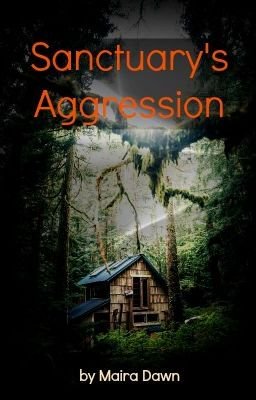
Sanctuary's Aggression - Part 8 just posted! (on Wattpad) http://my.w.tt/UiNb/zPOeV6IigF "I might have just procrastinated myself to death." In an unstable world, a therapist seizes her chance to change a young boy's life forever and two brothers from the forest become more than they thought possible. Conflict surrounds them as they struggle to come to terms with this new world and each other, as well as their own haunted pasts.
#action#adventure#apocalytic#bloomingauthorawards#disease#dizzyawards2k17#drama#fiction#pandemic#post-apocalyptic#romance#sci-fi#sciencefiction#strong-female-character#survival#thriller#wattys2017#science-fiction#books#wattpad#amreading#amwriting#virus
1 note
·
View note
Link
An excellent article! The author never mentions solarpunk directly, but this quote sums it up nicely:
“All readings of human history have to allow for the possibility of a negative outcome. It haunts us in the zombie movie, the disaster movie, in the post-apocalytic wasteland of films such as The Road or Elysium. But why should we not form a picture of the ideal life, built out of abundant information, non-hierarchical work and the dissociation of work from wages?”
600 notes
·
View notes
Text
Google Maps with Street View is such a fantastic tool for writing. When you need to map out the exact route your futuristic post-apocalytic character is taking in his modified biodiesel/electric hybrid truck to get from one ruined city to another to rescue lost books, you can not only map the route, you can also go to Street View to drive down the route virtually so you can figure out where he might be attacked by motorcycle bandits, whether a bridge over a creek is bridgelike enough to be a choke point that local warlords might demand a toll to travel over, and where the urban density is enough that he could be stopped by little children running into the road to prevent him from moving forward so their older siblings can try to smash his car open to steal his stuff.
19 notes
·
View notes
Text
Reading Update (14/03/2020)
So I picked up STATION ELEVEN to read a few days ago. I had no idea what the book was about when I started reading and realised quickly that maybe it wasn’t the best thing for me to read at this very moment… *
BUT I legit couldn’t stop. I think it’s very well written and it almost made me cry today. It’s super different from my usual reads and even includes a lot of things I tend to hate (post-apocalytic world, multiple PoVs, multiple timelines…), but I genuinely think it is so good, because it has already moved me a lot emotionally and I want to just keep reading!
* It’s about a SARS-like pandemic. I said I didn’t want to mention these topics on here, but I feel like I have to at least explain this so people know why I said that it’s not the best book to read right this moment. I actually discourage you from picking it up at this point in time if you are anxious about the situation like me.
#station eleven#a v good book!#in my humble opinion#emily st john mandel#book recs#booklr#books#reading#tw covid 19#tw coronavirus
22 notes
·
View notes
Photo

#SwordAndPlanet suggests Norton's post-apocalytic novel mostly fits in S&P. The hero explores the ruins of an advanced civilization searching for lost knowledge and advanced tech. His tribe wars with inhuman, sentient beings for scarce resources. He's not an outsider from another world, but I think most fans of S&P will enjoy this book.
1 note
·
View note
Text
My thoughts on Mortal Engines
SPOILERS AHEAD
Ok, so this movie defined mediocre. It wasn't terrible, it wasn't great, it was in between. There were some awesome things about it, and there were some fucking awful things about it.
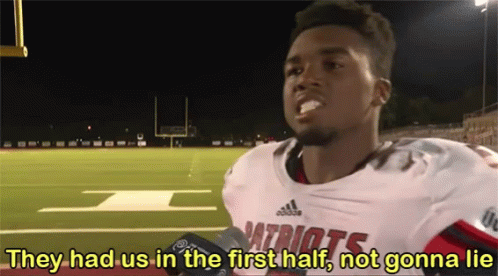
I honestly quite enjoyed the first half, I really liked the design of London and the CGI was, as always with big budgets these days, impressive. Robert Sheehan (who we've all discovered is super talented) did a great job of portraying Tom (also hot damn, my bisexual heart was very happy throughout this movie). I wasn't convinced with Hester, which I think came down to the characterisation not the actress. The scar was nonexistent, you could easily ignore it and there was a scene where Tom first meets Hester and we're supposed to be shocked by her scar but it's not?? shocking?? She should be missing an eye and her nose should be destroyed. But instead we get a easily disguised line. She also became friendly with Tom wayyyy too quickly (the stupid romance is a point for later).
Now let me introduce my lord and saviour Anna Fang.
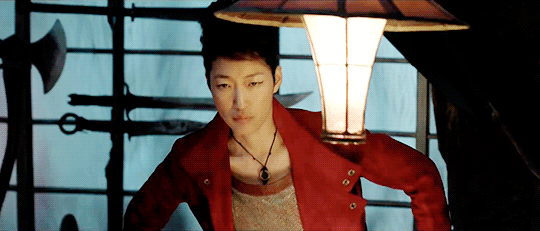
You ever see a woman so beautiful you would die for her??? My skin is clear. My crops are watered. She was perfect.
Then we hit the second half of the film. Shrike's death was stupid and was the first sign of the unravelling of the plot, and the straying from the books. Hester would not have displayed that much emotion for his death. That is not her character. Neither was all the 'romantic' looks between her and Tom, their love was slowly and carefully developed through the books, not thrown in our faces like this! Ugh, I'm at least thankful that they didn't kiss.
I hated Anna's death but that was true to the story and I think it was done right. Her band of warriors were cool too but it was too predictable that they would all die and therefore you didn't really take a lot of notice of them.
The biggest problem with the film was its dumbass ending. Katherine Valentine was weak and a minor character in this, and the film did not do her justice AT ALL. She is supposed to be the one who stops MEDUSA and in the process sacrifices herself and kills Valentine. The lack of this sacrifice really took away a crucial aspect of the book and destroyed the heroism of her character. Ugh. And Valentine's death, however appropriate, was stupid and unnecessarily different to the book.
And the final shot of Tom and Hester, with Hester GIGGLING, riding off into the sunset? Um did the writers/director actually READ THE BOOK AT ALL???? That ending reminded me of the 2007 adaption of The Golden Compass, and that is not a good thing.
So to summarise, Mortal Engines is worth the watch if you enjoy pretty things, you're bisexual, and/or you like post-apocalyptic stories with lots of cool airships and machinery. It's not worth the watch if you are a hardcore fan of the books and/or like your post-apocalytic fantasies with actual consequences for the main characters and female protagonists that possess grit, actual substance and proper flaws.
I hope this series is redone in a decade or so, much like His Dark Materials I'd love to see this done right. Mortal Engines is a great read and you should not let your opinions of the film stop you from reading the books. I assure you they are on very different levels.
Trench out.
#mortal engines#mortal engines movie#hester shaw#tom natsworthy#tester#robert sheehan#hugo weaving#jihae#anna fang#bisexual#fantasy#movies#fantasy movies#movie review#lgbt#his dark materials#hdm#peter jackson#trench talks#trench review#post-apocalytic#umbrella academy#a darkling plain#infernal devices#predator's gold#mortal engines spoilers
44 notes
·
View notes